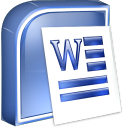 One of the more amusing parts of my workday is getting 2-3 calls each day from offshore companies asking me to outsource our development work. A good portion of their pitches refer to their developers as “resources.” It’s a wistful thought, that I could simply pull out a checkbook and buy a programming resource or two to help out with work when we are overbooked.
One of the more amusing parts of my workday is getting 2-3 calls each day from offshore companies asking me to outsource our development work. A good portion of their pitches refer to their developers as “resources.” It’s a wistful thought, that I could simply pull out a checkbook and buy a programming resource or two to help out with work when we are overbooked.
Continue reading
Tag Archives: Software Sagacity
Automatically Securing a Web Folder
 Web applications often store dynamic data in folders together with the application. From WordPress to Magento, many open source apps default to intermingling the data with the application folder structure. Although this provides a simpler deployment and ease of installation for newcomers, it also provides a significant security loophole for exploit by hackers.
Web applications often store dynamic data in folders together with the application. From WordPress to Magento, many open source apps default to intermingling the data with the application folder structure. Although this provides a simpler deployment and ease of installation for newcomers, it also provides a significant security loophole for exploit by hackers.
Continue reading
Debugging .NET Memory Leaks with ANTS Memory Profiler
 Memory leaks in .NET can be a challenging problem to both identify and solve. While C and C++ programs make memory management a constant concern during development, C# touts its garbage collector as the end to memory management and an easier way to program. Unfortunately, there are times when the C# garbage collector does not work as expected, resulting in applications that randomly crash after extended use.
Memory leaks in .NET can be a challenging problem to both identify and solve. While C and C++ programs make memory management a constant concern during development, C# touts its garbage collector as the end to memory management and an easier way to program. Unfortunately, there are times when the C# garbage collector does not work as expected, resulting in applications that randomly crash after extended use.
Continue reading
How to Convert HMTL to PDF using PowerShell
 Microsoft PowerShell is an incredibly flexible batch scripting engine – essentially the Swiss Army knife of Windows programming. Although the language itself is derivative of Batch files, it gains significant capability through .NET integration. PowerShell scripts can access SQL databases, execute shell commands, parse file and directory structures, and perform I/O, mostly through one-line commands.
Microsoft PowerShell is an incredibly flexible batch scripting engine – essentially the Swiss Army knife of Windows programming. Although the language itself is derivative of Batch files, it gains significant capability through .NET integration. PowerShell scripts can access SQL databases, execute shell commands, parse file and directory structures, and perform I/O, mostly through one-line commands.
Continue reading
A Faster Android App Emulator using Android-x86
 The key to successful rapid application development is a fast deployment and testing environment. Quick builds and deployments enable better testing of new functionality, since the developer retains the changes fresh in his mind and can make fixes iteratively instead of in large batches. Altogether, this results in more polished, full-featured apps, and faster app time-to-market.
The key to successful rapid application development is a fast deployment and testing environment. Quick builds and deployments enable better testing of new functionality, since the developer retains the changes fresh in his mind and can make fixes iteratively instead of in large batches. Altogether, this results in more polished, full-featured apps, and faster app time-to-market.
Continue reading
What does “Hello World” really mean?
 Almost every modern programming language tutorial starts out with a short script that simply outputs the phrase “Hello World.” This sample code has been used so much that the phrase has become part of the computer programming lexicon – and its ubiquity has caused the words to lose much of their meaning. A stroll through the annals of programming history, however, give us a pleasant refresher of the true reason many of us started programming.
Almost every modern programming language tutorial starts out with a short script that simply outputs the phrase “Hello World.” This sample code has been used so much that the phrase has become part of the computer programming lexicon – and its ubiquity has caused the words to lose much of their meaning. A stroll through the annals of programming history, however, give us a pleasant refresher of the true reason many of us started programming.
Continue reading
Hot Algorithms – The Fourier Transform
 Just like certain clothes never seem to go out of style, there are algorithms that prove their mettle year after year, decade after decade. Chief among these is the Fourier Transform – a mathematical brilliance that is as resilient as it is useful.
Just like certain clothes never seem to go out of style, there are algorithms that prove their mettle year after year, decade after decade. Chief among these is the Fourier Transform – a mathematical brilliance that is as resilient as it is useful.
Continue reading
How to read Excel XLSX files using ASP.NET
 It’s often useful to import Excel files directly into an ASP.NET web application in order to simplify data entry. Excel makes it easier to manipulate data, and has far better integration with other apps than most web grids. As a result, integrating a web application with Excel lets users leverage the best features of a spreadsheet software, while taking advantage of the RDBMS and business logic in the web application.
It’s often useful to import Excel files directly into an ASP.NET web application in order to simplify data entry. Excel makes it easier to manipulate data, and has far better integration with other apps than most web grids. As a result, integrating a web application with Excel lets users leverage the best features of a spreadsheet software, while taking advantage of the RDBMS and business logic in the web application.
Continue reading
PHP Form Sniffing – Full GET and POST Variable Simulation
 When developing web applications, it is sometimes necessary to capture and replicate a particular request in order to debug and fix a problem. This is especially true when integrating with third-party applications, where it can be challenging and time-consuming to reproduce a specific scenario. If the errors are sporadic, capturing all relevant data to a file will allow the developer to review the log afterward to match the incident time with the suspect form parameters.
When developing web applications, it is sometimes necessary to capture and replicate a particular request in order to debug and fix a problem. This is especially true when integrating with third-party applications, where it can be challenging and time-consuming to reproduce a specific scenario. If the errors are sporadic, capturing all relevant data to a file will allow the developer to review the log afterward to match the incident time with the suspect form parameters.
Continue reading
C#.NET and OpenXML DocX Text Replacement
 The OpenXML DocX format in Microsoft Word offers a new, accessible format for manipulating documents. Whereas the previous “doc” format was proprietary, the new “docx” format directly exposes XML source files, enabling developers to generate dynamic Word documents, or directly edit their content. This brings opportunity for exciting tools such as text replacement algorithms and native mail-merge. Along with the opportunities, however, come several challenges and caveats that need to be handled in development.
The OpenXML DocX format in Microsoft Word offers a new, accessible format for manipulating documents. Whereas the previous “doc” format was proprietary, the new “docx” format directly exposes XML source files, enabling developers to generate dynamic Word documents, or directly edit their content. This brings opportunity for exciting tools such as text replacement algorithms and native mail-merge. Along with the opportunities, however, come several challenges and caveats that need to be handled in development.
Continue reading







